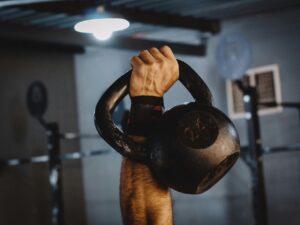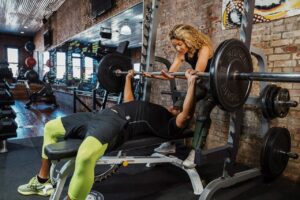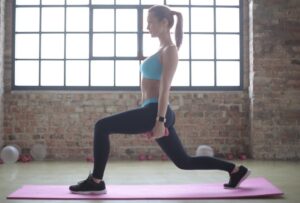The chest, also known as the pectoralis major, is a large fan-shaped muscle that covers the front upper torso. It originates from the sternum, the clavicle, and several other points, narrowing down to a tip that inserts into the humerus (upper arm bone) (1).
Because of its insertion point, the chest is heavily involved in various arm motions, including adduction (bringing your arms in from the sides) and shoulder flexion (lifting your arms overhead) (1).
The pectoralis major has two heads (1):
- Clavicular (upper portion)
- Sternocostal (middle and lower area)
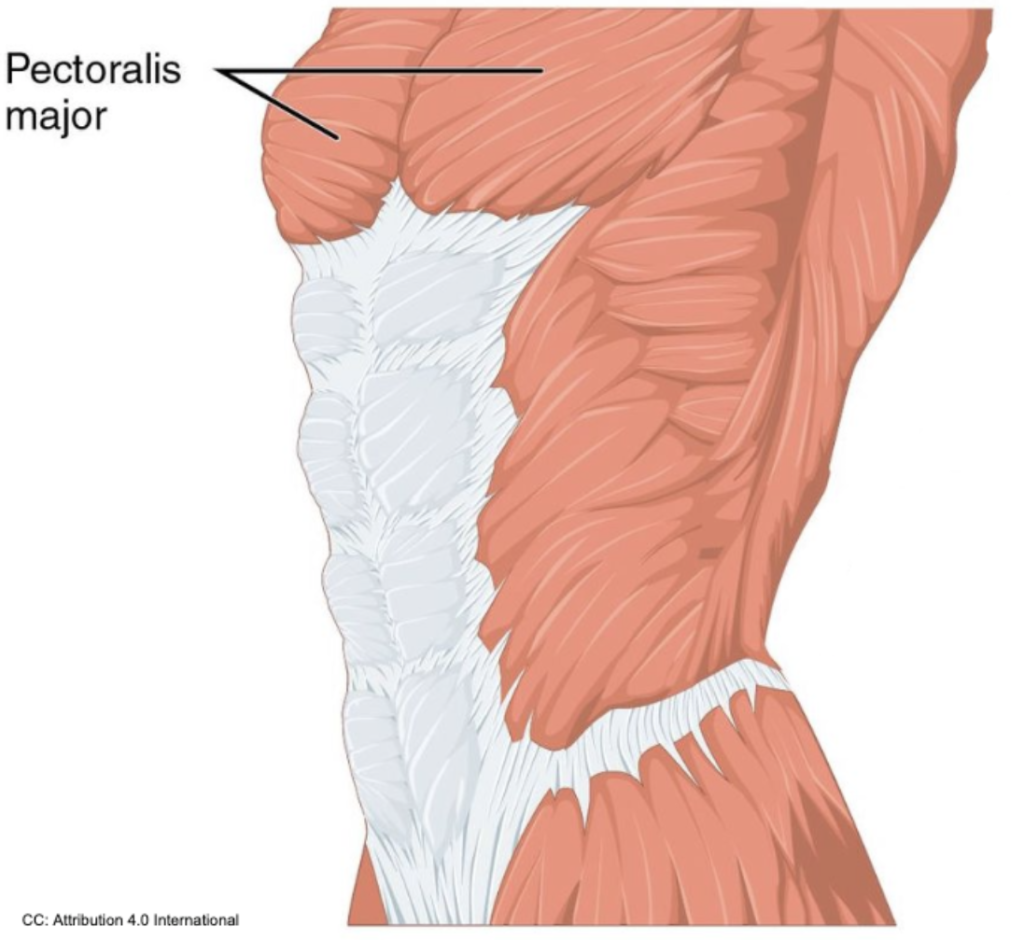
Developing both pectoral areas requires a combination of exercises that target the muscle group from several angles.
Let’s cover some of the best compound and isolation chest exercises, how to select them accordingly, and more.
Compound vs. Isolation Exercises
Compound exercises, also known as multi-joint movements, train several muscle groups simultaneously, involving two or more joints.
An example of a compound exercise is the flat barbell bench press that trains the chest, shoulders, triceps, serratus anterior, and midsection, involving the shoulder and elbow joints (2).
Since compound exercises involve more muscles, you can train with heavier weights, make more predictable progress, and build strength in the long run.
In contrast, isolation exercises are single-joint activities. The objective is to train a single muscle group and involve one joint.
One example of a compound exercise is the flat dumbbell chest fly. When done correctly, the movement emphasizes the chest and involves the shoulder joint (3).
When to Do Compound Versus Isolation Exercises
Deciding when to do compound and isolation exercises when training your chest is straightforward.
Here are three simple rules:
- Begin your workouts with compound exercises
- Proceed to assistance compound movements
- Finish your sessions with chest isolation activities
Each chest workout should begin with a compound exercise, such as a flat barbell bench press, an incline dumbbell press, a chest dip, or similar.
Such movements provide a strong training stimulus and offer an excellent overloading potential, allowing you to increase your workout difficulty as you make progress.
Additionally, doing challenging activities early is great for training with proper technique and performing at your best.
Once you’ve done one or two primary compound exercises, proceed to assistance multi-joint activities. Don’t worry if it sounds a bit confusing. In the training context, assistance exercises are compound movements that aren’t as challenging.
An example of such an exercise would be the machine chest press. Like a bench press, it trains your chest, shoulders, and triceps, but it is much less demanding and easier to learn.
Other examples include the push-up and certain variations, assisted chest dips, and similar.
Once you’ve completed these, you can finish with some isolation work. Single-joint exercises are less challenging, and the risk of technique breakdown is small, so long as you don’t attempt to use too much weight.
Good isolation activities include flat and incline dumbbell flyes, low and high cable chest flyes (cable crossover), Pec deck flyes, etc.
Here’s how these rules might look like in a workout:
| Exercise | Sets | Reps | Type |
| Bench Press (Barbell) | 3 | 5 to 8 | compound |
| Incline Bench Press (Dumbbell) | 3 | 8 to 10 | compound |
| Chest Press (Machine) | 3 | 12 to 15 | assistance-compound |
| Push Up | 3 | 12 to 20 | assistance-compound |
| Low Cable Fly Crossovers | 3 | 15 to 20 | isolation |
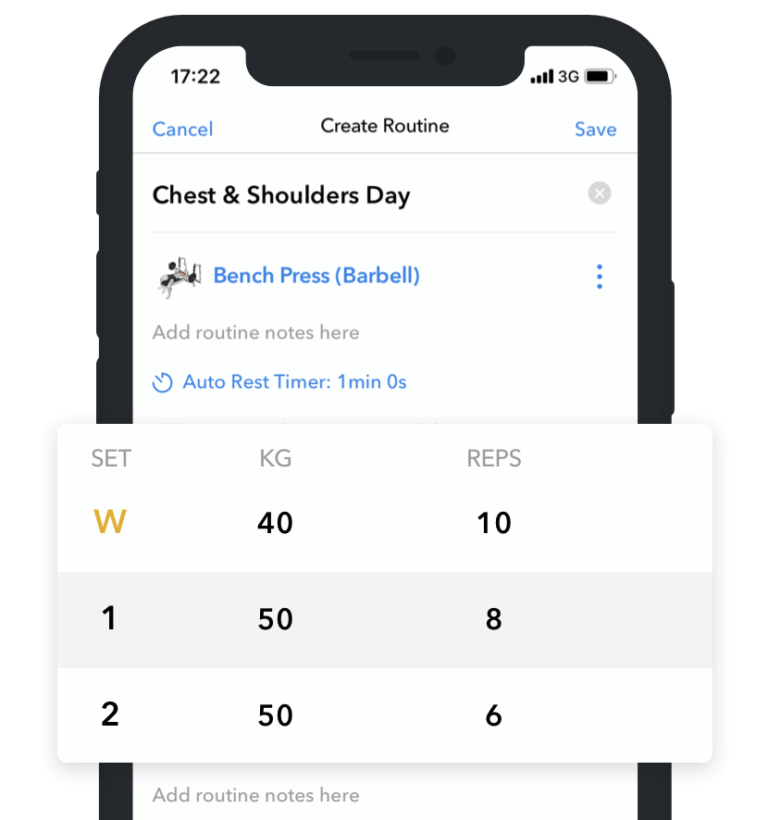
Hevy – Workout Tracker





Hevy – Workout Tracker
Create your workout with chest exercises with Hevy, and track your progress
Log and track your chest workout on the Hevy app.
List of The 8 Best Compound Chest Exercises
1. Bench Press (Barbell)
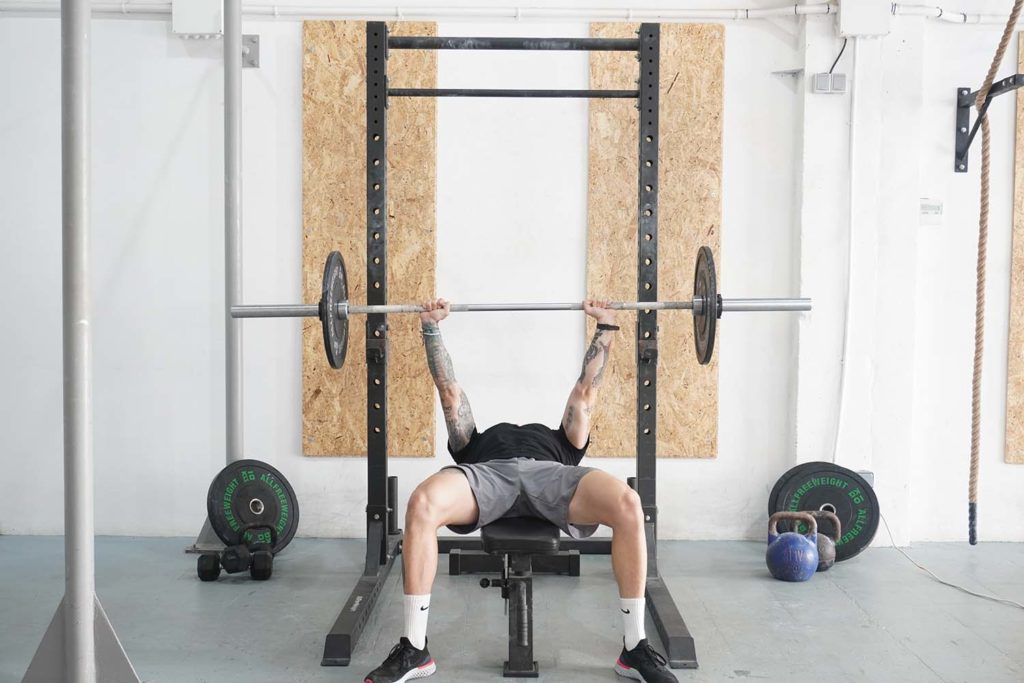

The flat barbell bench press is one of the most popular gym exercises. After all, what’s the first thing people ask when you tell them you hit the gym? It’s probably some variation of, “How much do you bench, bro?”
Bench presses are an excellent compound movement because they target the chest, offer a good range of motion, and have excellent overloading potential.
A wider grip can lead to slightly better pectoral activation, whereas a narrower grip (hands shoulder-width apart) shifts the focus to the triceps.
2. Incline Bench Press (Barbell)
The incline barbell press is similar to the classic exercise, apart from one difference. Instead of lying on a flat bench to press, you set yourself up at an incline bench of 30 to 45 degrees.
Doing so shifts the emphasis to the chest’s upper (clavicular) portion (4).
Flat bench and incline press variations are beneficial for targeting all areas of the pectoralis major, promoting more balanced development.
Like the flat press, a wider grip can promote a stronger chest stretch, whereas a narrower grip helps target the triceps.
3. Bench Press (Dumbbell)
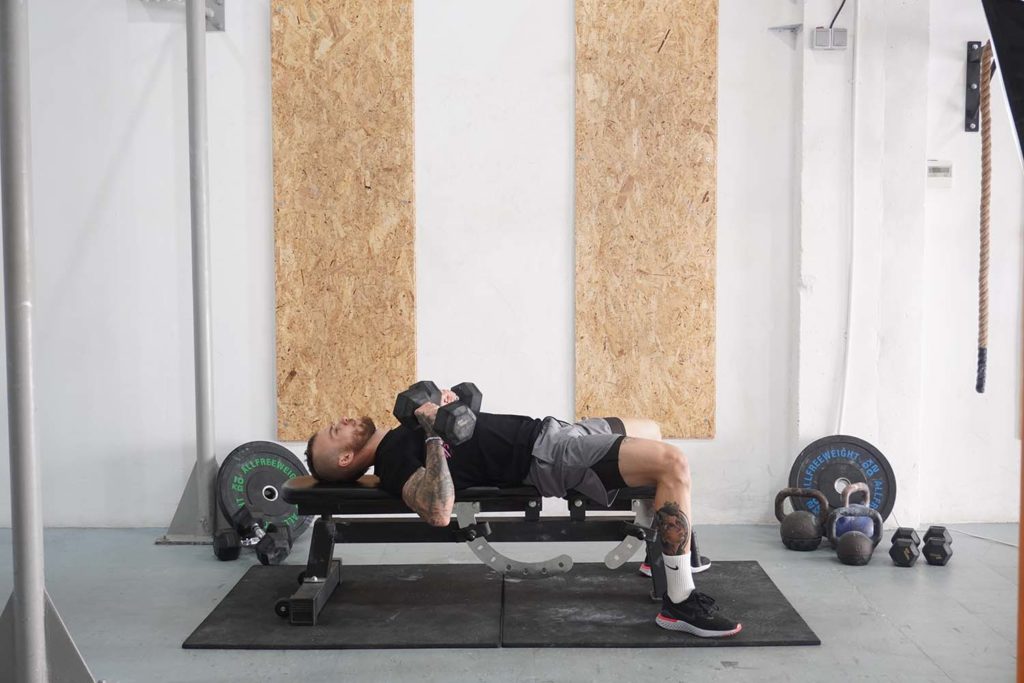

The flat dumbbell press is another classic exercise for chest development. Similar to the bench press, the activity targets your chest, shoulders, triceps, and serratus anterior.
One notable difference is that using dumbbells leads to greater instability, forcing your midsection muscles to engage more.
An advantage of dumbbells is that both sides of your body work independently, reducing the risk of side-to-side muscle imbalance.
Additionally, dumbbells allow for a slightly longer range of motion. You can lower the dumbbells a bit more to stretch your chest and adduct your arms at the top by bringing the dumbbells together for a stronger concentric contraction.
4. Incline Bench Press (Dumbbell)
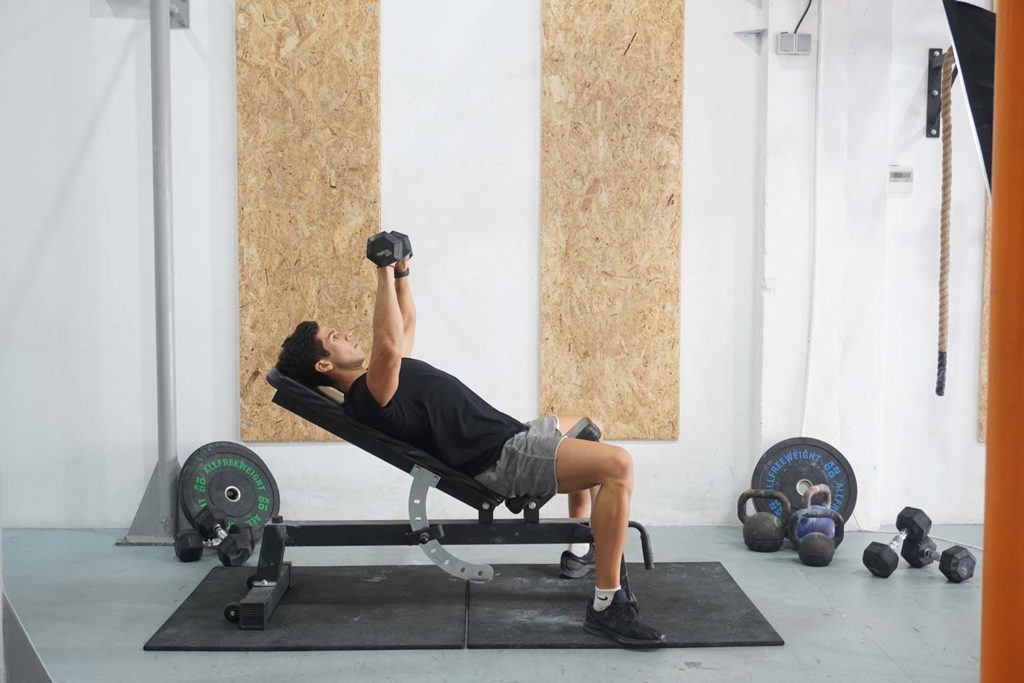

Incline dumbbell presses are similar to the incline barbell press. The objective is to set yourself up on an incline bench (an angle of 30 to 45 degrees) and push the weight over your torso.
Dumbbells are particularly useful because bringing your arms together at the top can lead to better activation of the upper pectoral head (4).
Plus, forcing both sides of your body to work independently is excellent for preventing muscle imbalances and strengthening your core.
Related articles: Bad Chest Genetics? 9 Ways to Fix Them
5. Chest Dip
The dip is one of the best chest compound exercises, and one people are often afraid to do.
Unlike most other chest exercises, the dip is a bodyweight activity requiring a strength base. The objective is to suspend yourself in the air by holding onto a pair of parallel bars. Once in position, lower yourself by bending your elbows and press to move back to the top.
Chest dips are often touted as effective for targeting the lower portion of the pectoralis major.
You can make the movement more challenging by attaching a weight to yourself or easier by doing it on a dip assist machine that takes away some of the resistance.
6. Chest Press (Machine)
Machine chest presses are a compound exercise you can do to add more variety to your training and complete more sets for your pectoralis major.
Unlike free-weight movements like the barbell bench press, a machine press is easier because the stability requirements are much smaller, allowing you to focus solely on training your chest.
Certain chest press machines will enable you to push slightly upward or downward, emphasizing the upper or lower chest, respectively.
7. Push Up
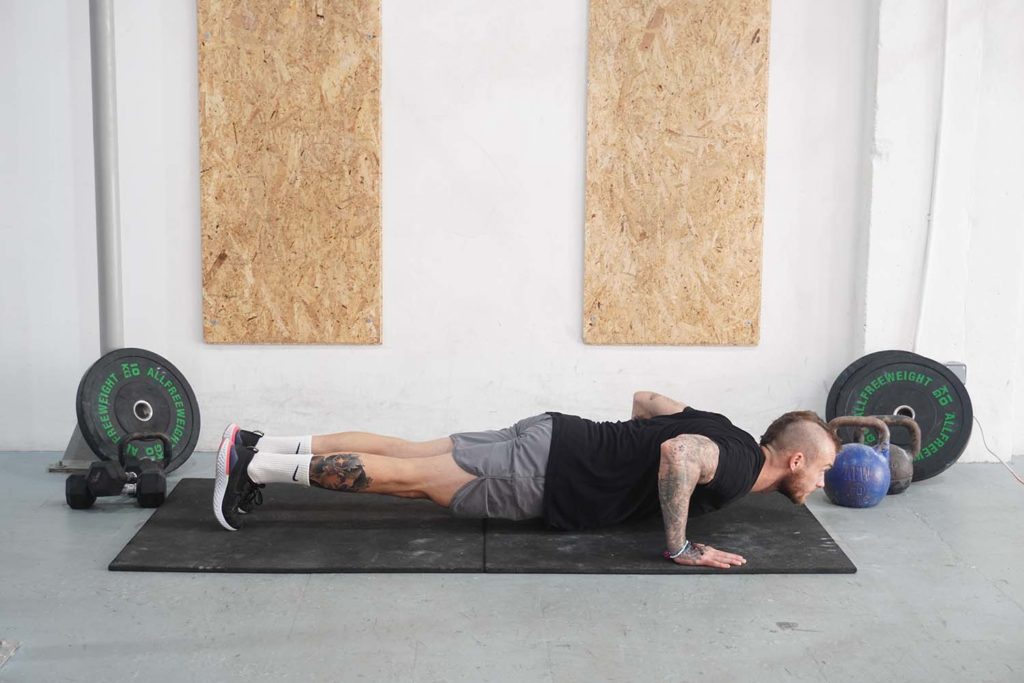

Push-ups are heavily underrated, but they are one of the best compound exercises for chest development and shoulder health.
Unlike most pec exercises where your scapula remains retracted from start to finish, push-ups allow movement at the shoulder blades while doing repetitions. Doing so is beneficial for strengthening the serratus anterior––a muscle crucial for scapular stability and shoulder protraction (5, 6).
Additionally, push-ups work great for trainees of all levels. Beginners can start with easier variations, such as the knee and incline push-ups, whereas more advanced trainees can do weighted, plyometric, or even one-arm push-ups.
8. Floor Press (Dumbbell)
Dumbbell floor presses are a unique chest exercise that is particularly useful for people with shoulder issues.
The objective is to grab a pair of weights, lie on the floor, place the back of your upper arms on the ground, and press the dumbbells over your chest.
A notable benefit of having your upper arms against the floor at the bottom position is that it limits your range of motion. Your elbows cannot travel too far down as you lower the weight, allowing your shoulders to stay in a strong and healthy position.
Plus, dumbbells reduce the risk of muscle imbalance because both sides of your body must work independently.
Related article: Extraordinary Dumbbell Chest Workouts to Develop Your Pecs
Find many isolation and compound chest exercises in the Hevy weightlifting trackers exercise library.





Hevy – Workout Tracker





Hevy – Workout Tracker
Create your workout with chest exercises with Hevy, and track your progress
List of 6 Chest Isolation Exercises
1. Cable Fly Crossover
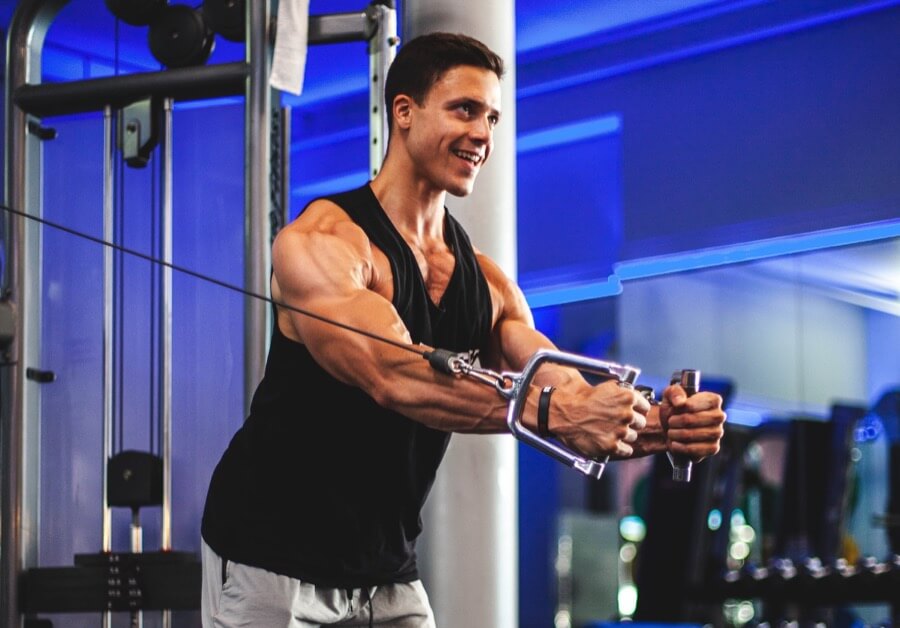

The high cable fly crossover is one of the best chest isolation exercises. First, cables provide consistent tension, leading to excellent muscle activation.
Second, doing a fly from a high position emphasizes the lower portion of the chest. The arm adduction angle runs opposite the muscle fiber orientation, resulting in preferential recruitment of motor units (7).
Third, cable machines offer an excellent overloading potential. You can start with the lightest available weight and gradually work up to 20, 30, or even 50+ pounds.
2. Low Cable Fly Crossover
The low cable fly crossover is another excellent chest isolation exercise.
In contrast to the previous movement, doing a fly from a low position emphasizes the upper portion of the chest. The upper chest fibers run in a slightly downward direction, and adducting your arms from a low angle allows you to target them preferentially (7).
Like the high cable crossover, the low cable fly provides similar benefits: constant tension, great muscle activation, impressive overloading potential, etc.
3. Chest Fly (Dumbbell)
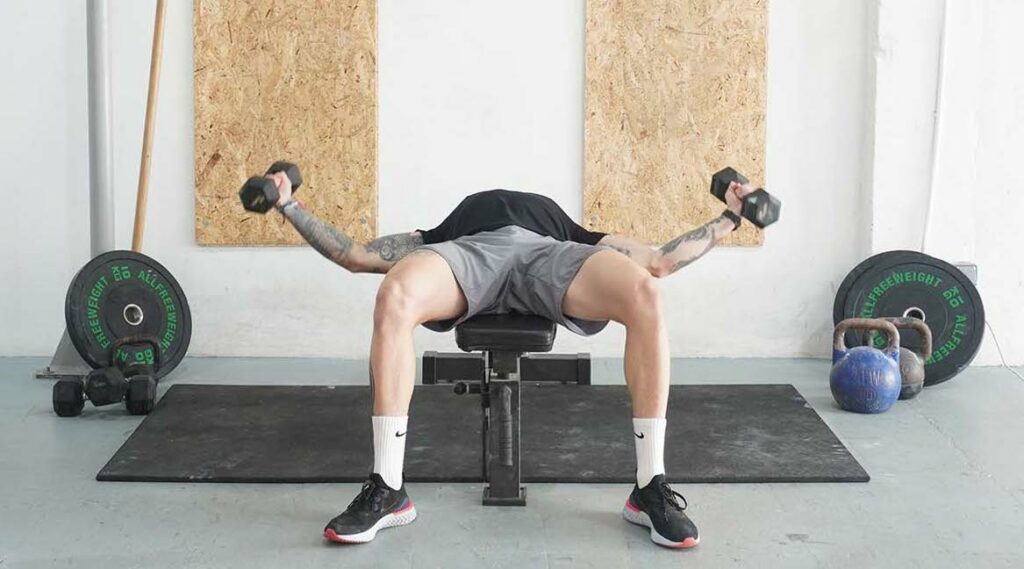

Dumbbell chest flyers are one of the classic isolation exercises for chest development, used by Arnold Schwarzenegger and other greats from the Golden Era of bodybuilding.
The objective is to grab a pair of dumbbells, lie on a flat gym bench, and move your arms in and out, squeezing and stretching your pectorals.
A notable benefit of the movement is that it requires minimal equipment and is a viable option even with a minimalistic home gym setup. Plus, similar to cable flyes, the overloading potential is excellent.
4. Incline Chest Fly (Dumbbell)
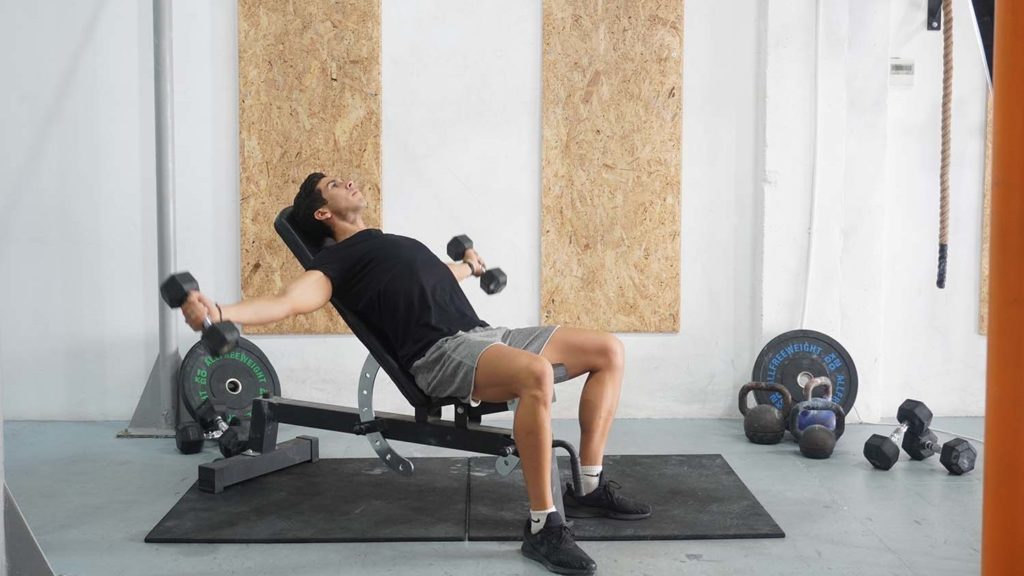

The incline dumbbell fly is another classic bodybuilding exercise that’s been around for decades.
Like an incline bench press, doing flyes at an incline targets the upper portion of the chest.
The objective is to lie on an incline bench (a 30 to 45-degree angle), raise the weights overhead, and have your palms facing one another. Once in position, lower the weights to your sides and adduct your arms, touching the weights at the top.
5. Butterfly (Pec Deck)
The butterfly, also known as a pec deck fly, is a unique chest exercise performed on a machine.
Unlike most chest fly variations, where you maintain a slight elbow bend, the objective during a pec deck fly is to keep your arms bent. You must sit on the machine, bend your elbows at 90 degrees, and position the inner part of your arms against the pads.
Doing so can lead to better pectoral activation, but it is best to experiment and see if you enjoy the exercise.
6. Chest Fly (Machine)
The machine chest fly is identical to the peck deck and cable flyes. Like both exercises, using a machine provides constant tension, leading to excellent muscle activation.
A notable difference between the machine and pec deck fly is that your arms remain straight during the former. Aside from that, both activities feature similar set-ups, ranges of motion, and movement patterns, so it mostly comes down to preference.
Final Words
Building a strong and muscular chest depends on more than doing the flat barbell bench press once or twice weekly.
Like most other major muscle groups in the body, the pecs benefit from a varied approach that includes training at various angles and combining compound and isolation exercises.
Other articles from the series:
- The Top 7 Isolation And 7 Compound Ab Exercises
- 10 Compound and 4 Isolation Back Exercises for an Impressive V-Taper
- 8 Isolation and 7 Compound Bicep Exercises For Big Arms
- 5 Isolation and 9 Glute Compound Exercises for a Head-Turning Behind
- 7 Isolation and 8 Compound Leg Exercises for a Strong Lower Body
- 8 Isolation and 9 Compound Shoulder Exercises
- 7 Isolation and 7 Compound Tricep Exercises For Big Arms


